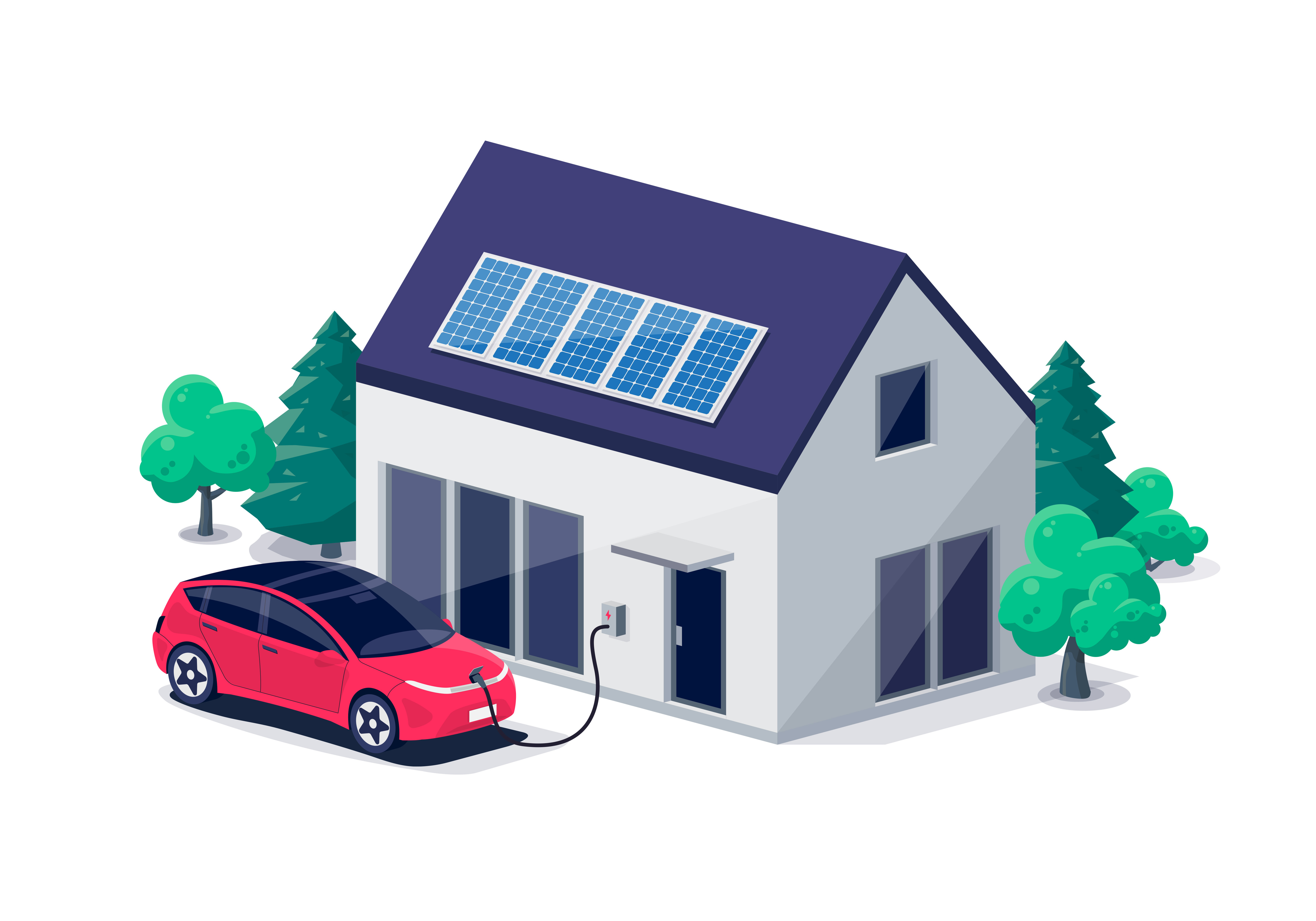Techno-economic studies on vehicle-to-home and vehicle-to-grid scenarios
Electric vehicles as "power plants on wheels": Electric vehicles can be used as quasi-stationary energy storage devices in the home or in the public power grid. Fraunhofer IFAM has many years of experience in the field of bidirectional charging and has developed a simulation tool for this purpose, which can be used to carry out techno-economic studies on vehicle-to-home and vehicle-to-grid scenarios.In so-called bidirectional charging, the energy stored in the traction battery can be fed back into a power grid. The electric vehicle can therefore not only be charged with electricity, but it can also output electricity. The vehicle's traction battery can thus be used as a quasi-stationary storage device for various energy services.
A passenger car is parked for 95% of its service life. Only 5% of this time is the vehicle used for mobility, i.e. driving. Regardless of whether it is a combustion engine or an electric vehicle. If we now consider that the electric vehicle is parked in front of the home for 95% of its entire service life (e.g. as a second car), it becomes clear what potential a regenerative electric vehicle has.
Using an electric car as energy storage device for buildings
In connection with regenerative energy sources (e.g. photovoltaic system), the traction battery, usually with a capacity between 20-100kWh, can be excellently used as buffer storage. Surplus photovoltaic power, which is not consumed by the home at time X (e.g. at midday), can be temporarily stored in the traction battery in order to supply it to the home again at time Y (e.g. in the evening after sunset). This minimizes the need to purchase (expensive) electricity from the public grid. This scenario is also referred to as vehicle-o-home (V2H).
Another application of a regenerative e-vehicle is to make the traction battery available for energy services that originate from the public power grid. This scenario is referred to as vehicle-to-grid (V2G). Here, the application areas of control power or energy market can be mentioned. V2H & V2G bring economic benefits, which can be calculated using simulations. Fraunhofer IFAM has developed a simulation tool for this purpose, which can be used to answer a wide range of questions or to identify new business models. Almost all parameters that are relevant for V2H & V2G can be varied. The additional load on the traction battery due to V2H & V2G applications are also part of the possible evaluations.
Grid operators, energy suppliers and grid service providers are thus faced with the challenge of integrating bidirectional charging of e-vehicles into the local or global energy grid in a legally compliant manner. Manufacturers of electric vehicles, on the other hand, must continue to develop their charging technology, as must manufacturers of regenerative charging stations. Their components must be constantly adapted to the current state of the art.
Further developing components with the highly flexible Fraunhofer IFAM test facility
Fraunhofer IFAM's highly flexible test facility and know-how in the field of sector coupling with electric vehicles are available to customers who wish to test and/or further develop their product. We can also carry out techno-economic potential analyses for bidirectional charging according to the possible use cases.
The "Smart Energy & Data" group offers an individual consultation in which bidirectional charging of electric vehicles can be investigated and further developed using the Fraunhofer IFAM test field, and the economic viability can be analyzed. In addition, the advantages and disadvantages of bidirectional charging of e-vehicles on the local and global energy grid can be demonstrated and potential business models derived as a result. Our in-house test field serves as a basis for the testing and further development of your charging technology and components.
Fraunhofer IFAM has many years of experience in the installation and operation of systems with bidirectional energy transmission technology for vehicle-to-home and vehicle-to-grid applications. Using its own simulation programs and the experience gained over the years, Dr. Stefan Lösch's "Smart Energy & Data" group is able to carry out techno-economic studies on vehicle-to-home and vehicle-to-grid applications.
 Fraunhofer Institute for Manufacturing Technology and Advanced Materials IFAM
Fraunhofer Institute for Manufacturing Technology and Advanced Materials IFAM